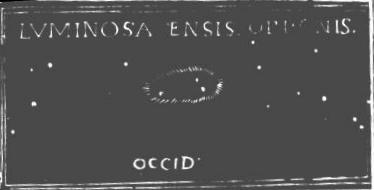http://www.seds.org/messier/xtra/Bios/hodierna.html wrote:
<<Giovanni Battista Hodierna was born on April 13, 1597 in Ragusa, Sicily as the son of Art Vita Dierna, who was either a mason or a shoemaker. Very probably, he grew up in poor environment, and was self-educated at least in science. As a young man, he observed the three comets of 1618-19 from Ragusa, with a telescope of Galilean type and fixed magnification 20. He became a Roman Catholic priest and was ordained at Syracuse, Sicily in 1622. From 1625 to 1636, he served as a priest in Ragusa, and taught mathematics and astronomy at his hometown.
Hodierna was an enthusiastic follower of Galileo. In 1628 he wrote the "Nunzio del secolo cristallino", an appraisal of Galileo's "Siderius Nuntius." Hodierna was particular impressed by Galileo's resolution into stars of the Milky Way and the "Nebulae" like Praesepe; this generated a life-long interest in nebulae, although most of his astronomical work concentrated on the bodies of the solar system.
In 1637, he followed Carlo and Gulio Tomasi, the Dukes of Montechiaro, to the newly founded Palma di Montechiaro. They gave him a house and a piece of land to live and funded his publications, and he served them first as a chaplain and parish priest. In 1644, he earned a doctorate in theology, in 1645, he was named archpriest, in 1655 court mathematician.
Besides his duties as priest, Hodierna practised astronomy, as well as natural philosophy, physics, botany, and other sciences. He studied light passing a prism and formulated a vague explanation of the rainbow. Also, he developed an early microscope and studied e.g. the eyes of insects and the fangs of vipers, and studied meteorological phenomena.
Hodierna's contributions to astronomy, though interesting and remarkable in particular if one takes his isolated life into account, have been of at best little impact, because his publications had only little circulation and were hardly known outside Sicily. Therefore, standard tracts of the history of astronomy rarely spend more than a few lines on this early priest astronomer. Also, his astronomy always tended to be mixed up with astrology.
In 1646 and 1653, Hodierna observed Saturn and created drawings showing the planet with its ring quite correctly; he had a short correspondence with Huygens on this subject around 1656. His "Protei caelestis vertigines sev. Saturni systema", published 1657, is among his best known publications.
In 1652, observed eclipses of Jupiter's moons, as well as the passages of their shadows over the disc of the planet. In 1656, he published the "Medicaeorum Ephemerides", probably his best known work, the first published ephemerides of the Galilean satellites, based on an improved theory of the motion of Jupiter's moons by the contribution of three types of periodic disturbations, analogous to contemporary planetary theory.
In his 1656 "De Admirandis Phasibus in Sole et Luna visis," Hodierna gives a treatise on the appearance of the Sun and the Moon, including sunspots and eclipses.
Perhaps his most interesting work is his 1654 "De systemate orbis cometici; deque admirandis coeli characteribus" [Of the systematics of the world of comets, and on the admirable objects of the sky]. Unfortunately, this work fell forgotten and was ignored until it was recovered by Serio et.al. (1985). Hodierna thought there were profound differences between comets and nebulae: Because of the motion and changing appearance of comets, he thought them to be made up of a more terrestrial matter, while nebulae should be made up of stars, and thus "Lux Primogenita". In the first part he follows Galileo's ideas on comets. In the second, more interesting part, he describes and lists 40 nebulae he had observed, with finder charts and some sketches, which Hodierna classifies according to their resolvability into stars in Luminosae (star clusters to the naked eye), Nebulae (appearing nebulous to the unaided eye, but are resolved in his telescope) and Occultae (not resolved in his telescope). About 25 of them could be identified with real deepsky objects (mostly open clusters), the others are either asterisms or insufficiently described for identification.
Hodierna's catalog of nebulous objects includes independent rediscoveries of the Andromeda Nebula (M31) and the Orion Nebula (M42) and at least 9, but probably 14 and perhaps 16, own original discoveries: M6, M36, M37, M38, M41, M47, NGC 2362, NGC 6231, the Lagoon Nebula M8, the Alpha Persei Cluster (Mel 20), probably M33, M34 and NGC 752, and (possibly) NGC 2451, as well as two further possible discoveries of NGC 2169 and NGC 2175 for which the identification is very unsafe. Also in this work, he created the first preserved drawing of the Orion Nebula.>>
 NGC 2174: Stars Versus Mountains
NGC 2174: Stars Versus Mountains

